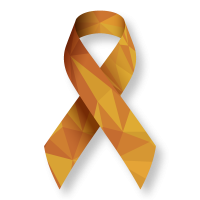Cxbladder excels in New Zealand
10th September 2013
NZX ANNOUNCEMENT: Released 10 September 2013
New Zealand clinicians and healthcare providers are excited about Pacific Edge Limited’s cancer detection system Cxbladder for its ability to detect bladder cancer with a high degree of accuracy.
Two User Programmes in New Zealand – a combined study of 178 patients with macrohematuria (blood in urine) has found that Cxbladder Detect outperforms cytology and saw 90% of all tumours. The full results are being prepared for publication.
The User Programme studies were conducted at two centres by Tony Beaven and Sue Osborne in conjunction with the Waitemata District Health Board (DHB); and Nick Buchan, Peter Davidson, Liz Mitchell and Barbara Gordon of Canterbury Urology Research Trust in conjunction with Canterbury DHB.
The study confirms the results of a larger, multi-centre Australasian study published last September in the peer reviewed Journal of Urology in the United States where Cxbladder outperformed the other commercially available tests benchmarked in the study. In that large study at a specificity of 85% Cxbladder Detect saw 100 % of T1, 100% of T2, 100% of T3, 100% of Tis and 100% of upper urinary tract cancers. Cxbladder Detect also saw 97% of high grade tumors.
Pacific Edge’s Commercial Manager, Brent Pownall, says the New Zealand user study demonstrates that Cxbladder Detect is a highly accurate and efficient detection test for urothelial carcinomas in the New Zealand healthcare context. “We look forward to having this product more widely used in New Zealand’s healthcare programmes, thus benefiting DHBs, clinicians and patients alike.”
“Cxbladder Detect gives clinicians and patients a high degree of assurance that the results are accurate which cytology cannot achieve to the same degree. In combination with cystoscopy, Cxbladder Detect will provide significant clinical upside, benefiting both patients and clinicians.”
“Patients presenting with hematuria who are given the choice of providing a urine sample for Cxbladder Detect, or undergo an extensive work-up and experience the discomfort of cystocopy, are likely to choose Cxbladder Detect every time.”
For our DHBs which are focused on providing the very best cost effective healthcare for New Zealanders, Cxbladder Detect provides a number of significant advantages:
- The Urine Sampling System can be sent directly to the patient at home, thereby minimising the need to queue to see a specialist and the inconvenience of another trip to the doctor or pathology lab collection centre
- Cxbladder Detect provides a cost effective way of evaluating patients presenting with hematuria before they get to the clinic and
- Cxbladder Detect does it in a non-invasive way.
Mid Central DHB based in Palmerston North is underway with their programme targeting Cxbladder Detect for yet another clinical value proposition that is expected to see a proportion of patients with hematuria, not having to come into the clinic for a full work-up.
Paul O’Sullivan, Pacific Edge’s Clinical Science Manager, outlined that the User Programme studies for Waitemata and Canterbury are based on 178 patients presenting with hematuria undergoing investigations for possible urothelial carcinomas. All were tested using Cxbladder Detect as part of their clinical work-up. Results of the Cxbladder Detect test were compared with urine cytology and cystoscopic findings to determine the clinical utility of the Cxbladder Detect test.
“Cxbladder Detect proved its superiority over cytology by a wide margin in detecting 90% of the cases of urothelial carcinomas amongst the 178 patients. On one site Cxbladder Detect correctly detected 100% of the patients with urothelial carcinoma. It also demonstrated its ability to correctly screen out patients who did not have urothelial carcinomas, which the study noted was particularly beneficial in patients presenting with hematuria.”
The study results will be published by way of a presentation at the Urological Society of Australia and New Zealand (USANZ) Annual Scientific Meeting in March 2014.
Last Updated: 27 Oct 2016 10:26 am






